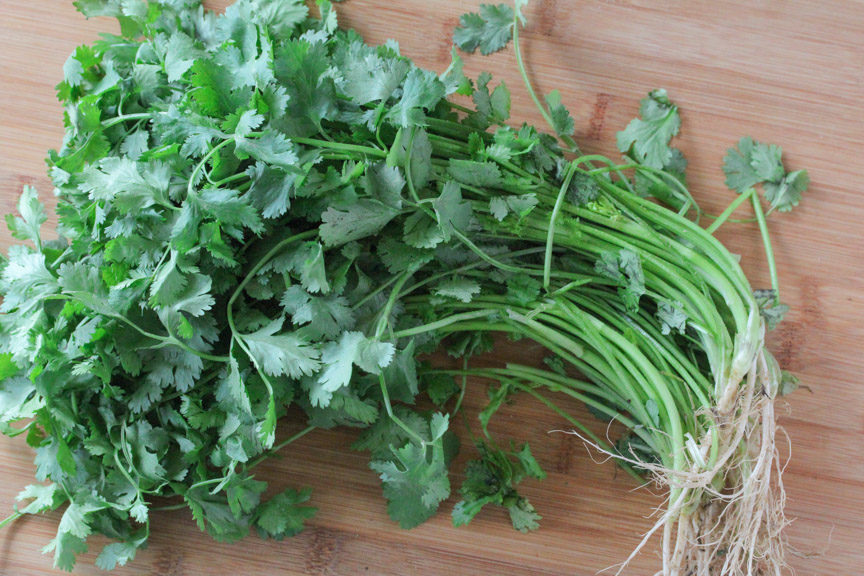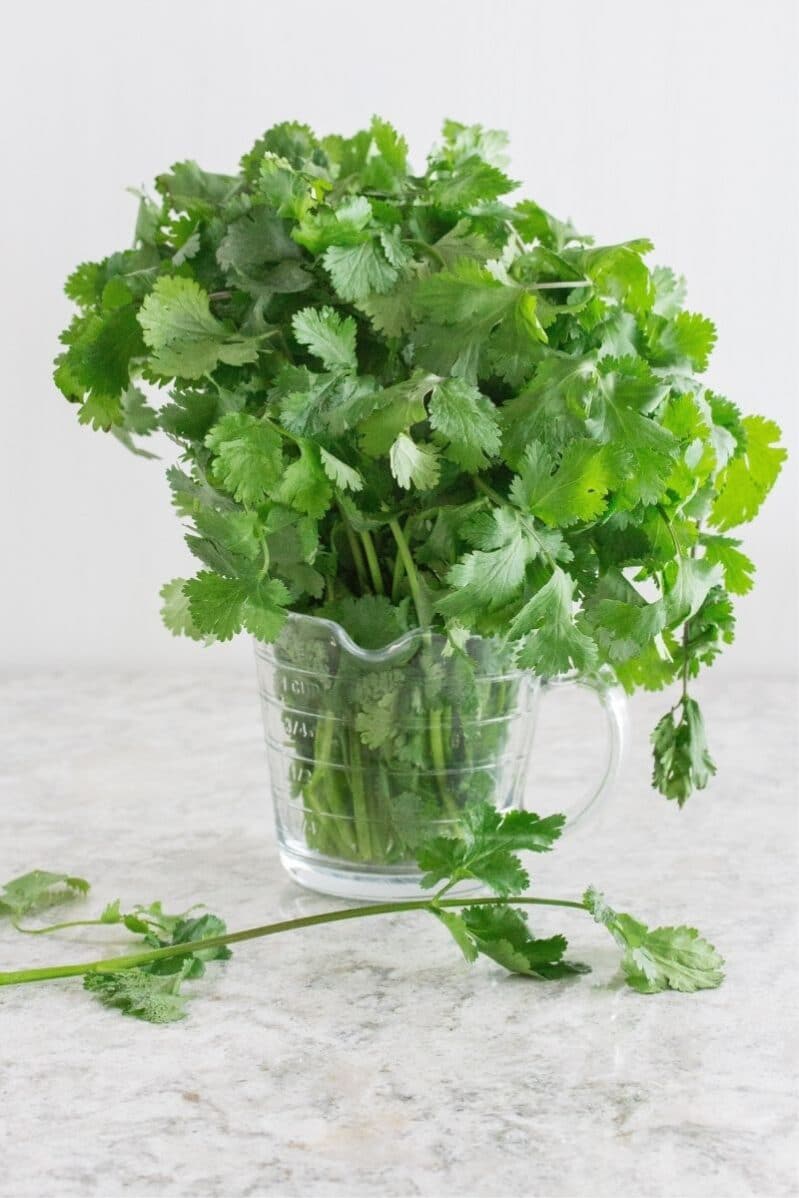About
Monash University recommends a serving size of 1 cup (16 g) of fresh, loosely packed cilantro leaves.
Coriandrum sativum. This dark green herb features lacy leaves, which distinguishes it visually from flat-leaf parsley, which you might confuse it with at first glance. It is very fragrant and aromatic and some think it tastes like a citrusy parsley. Others think it tastes soapy and this is actually due to genetics and not a hallucination of the palate!
Approximately 10% of the population (estimates range from 4 to 14%) share a group of olfactory genes, OR6A2, that detect the smell of aldehyde chemicals – which are found in both cilantro and yes, soap. You can try substituting flat leaf parsley for cilantro if this is the case for you, but the flavor of the dish will not be the same.
Coriander refers to the dried seed of the plant but you might also see the leafy herb referred to as coriander from time to time. It might also be labeled as Chinese Parsley or Mexican Parsley. Cilantro is used often in Mexican, Latin, Asian, Indian and Caribbean cooking.
How to Buy
Look for vibrant, fresh stalks and leaves with no brown spots or wilting. The aroma should be clean and fresh.
How to Prep & Cook
The leaves should be washed and gently dried before using. We have many recipes where we ask you to chop finely and either add to the recipe or use as garnish. It is best to use soon after chopping. The leaves lose their vibrancy pretty quickly.
How to Store
Place stalks in a glass of water, place a bag over all and tightly close to contain the humidity; refrigerate. Alternately you can refrigerate in a plastic bag filled with air and then place in the crisper drawer. Either way use as soon as possible, although you will get a few days storage, depending on how fresh the herb was to begin with. If leaves begin to flag a bit, try placing them in an ice water bath; they might refresh and perk up.



